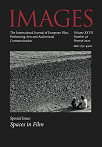Między kosmopolityzmem a nazizmem – konteksty przestrzeni symbolicznych czterech filmów nakręconych przez niemieckiego operatora Franza Weihmayra
Between cosmopolitanism and Nazism: the contexts of the symbolic space in four movies by the German cinematographer Franz Weihmayr
Author(s): Daria MazurSubject(s): Semiotics / Semiology, Interwar Period (1920 - 1939), Fascism, Nazism and WW II, Film / Cinema / Cinematography
Published by: Uniwersytet Adama Mickiewicza
Keywords: symbolic space; cosmopolitism; nazizm; cinema of nazi Germany; German cinematographers; Polish cinema of 1930s;
Summary/Abstract: The paper is a comparative analysis of the circumstances influencing symbolic spaces in four movies by Franz Weihmayr in the years 1931–1942: Dzikie Pola [Wild Fields], Halutzim, La Habanera and The Great Love. The analysis allows for delineating the development of the German cinematographer Franz Weihmayr’s career, which, in the context of historical-political and ideological-artistic circumstances, can serve as an example of a broader phenomenon: a particular fluctuation of choices made by German cinematographers over the Weimar, Nazi, and post-war periods. This analysis is of pioneering importance because of the paucity of publication heretofore dedicated to Weihmayr’s works, who at the time worked together with, among others, Leni Riefenstahl, Frank Wysbar, and Hans Detlef Sierck, as well as Polish directors, such as Józef Lejtes and Aleksander Ford. The framework for semiotic analyses of the symbolic spaces of the movies mentioned above are two groups of contexts connected with ideas stemming from contradictory bases: the idea of cosmopolitism and the idea of Nazism.
Journal: Images. The International Journal of European Film, Performing Arts and Audiovisual Communication
- Issue Year: 27/2020
- Issue No: 36
- Page Range: 21-40
- Page Count: 20
- Language: Polish

